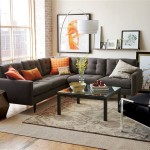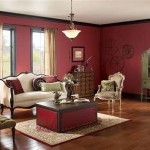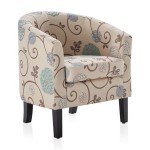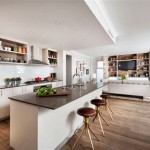The Pragmatic Elegance of a Table Between Two Chairs in the Living Room
The living room serves as a central hub in many homes, a space designed for relaxation, conversation, and entertainment. The careful arrangement of furniture is crucial to optimizing both the functionality and aesthetic appeal of this area. Among the various furniture pieces that can contribute to a well-designed living room, a table positioned between two chairs stands out as a particularly versatile and practical choice. This arrangement offers a multitude of benefits, enhancing both the visual harmony and the usability of the space.
The strategic placement of a table between two chairs transforms an otherwise potentially awkward or incomplete seating arrangement into a cohesive and inviting area. It creates a focal point, anchors the space, and provides a convenient surface for beverages, books, decorative items, or even small electronic devices. In essence, this simple addition elevates the comfort and practicality of the seating arrangement, promoting a more engaging and enjoyable living room experience.
Enhancing Functionality and Convenience
The primary benefit of incorporating a table between two chairs is the enhanced functionality it provides. Without a table, individuals seated in the chairs might lack a readily accessible surface for resting drinks, holding reading materials, or placing personal items. A table eliminates this inconvenience, allowing occupants to relax and engage in conversation without having to constantly hold or find a place for their belongings. This is particularly relevant when entertaining guests, as it offers a designated spot for refreshments, reducing the likelihood of spills or clutter.
Beyond its practical applications, the table also serves as a focal point within the seating arrangement. It visually connects the two chairs, creating a sense of unity and balance. This is particularly important in larger living rooms where individual seating areas might feel isolated. The table effectively bridges the gap, fostering a more intimate and connected environment. The visual appeal of the table, whether it is a sleek modern design or a rustic antique piece, further contributes to the overall aesthetic of the room.
The size and type of table chosen can significantly impact its functionality. A small side table is ideal for holding a single beverage and a book, while a larger coffee table or cocktail table offers more surface area for multiple items and can even accommodate board games or snacks. The height of the table is also a crucial consideration. It should be approximately the same height as the chair arms to ensure easy access and comfortable reach for those seated. The material of the table, whether it is wood, glass, metal, or a combination thereof, should complement the overall design scheme of the living room.
Furthermore, the table can serve as a charging station for electronic devices. By placing a power strip or charging dock on or under the table, individuals can conveniently charge their phones, tablets, or laptops while relaxing in the chairs. This is particularly useful in today's technology-driven world, where staying connected is often a priority. The integration of technology into the seating arrangement further enhances its functionality and convenience.
Creating Visual Harmony and Aesthetic Appeal
Beyond its practical benefits, a table between two chairs significantly contributes to the visual harmony and aesthetic appeal of the living room. The table acts as a visual anchor, grounding the seating arrangement and creating a sense of balance. It prevents the chairs from appearing disjointed or floating in the space, particularly if they are not part of a larger sectional or sofa arrangement.
The style of the table should complement the overall design aesthetic of the living room. A modern living room might benefit from a sleek, minimalist table with clean lines and geometric shapes. A traditional living room might be better suited to a more ornate table with carved details and a rich, warm finish. The choice of materials, colors, and textures should also be consistent with the existing décor to create a cohesive and visually appealing space.
Decorative items placed on the table can further enhance its aesthetic appeal and personalize the living room. A vase of flowers, a stack of books, a decorative tray, or a collection of small sculptures can add visual interest and reflect the homeowner's personal style. However, it is important to avoid cluttering the table with too many items, as this can detract from its functionality and create a sense of disorganization. A few carefully chosen items are often more effective than a large collection of miscellaneous objects.
The placement of the table in relation to the chairs is also crucial for achieving visual harmony. Ideally, the table should be centered between the chairs and positioned close enough so that it is easily accessible for those seated. The size of the table should be proportional to the size of the chairs and the overall scale of the living room. A table that is too small might appear insignificant, while a table that is too large might overwhelm the space.
Lighting can also play a significant role in enhancing the visual appeal of the table and the surrounding seating area. A table lamp provides task lighting for reading or writing and also adds a warm, inviting glow to the room. The style of the lamp should be consistent with the overall design aesthetic of the living room. The placement of the lamp should be carefully considered to avoid glare or shadows. Alternatively, decorative candles or string lights can create a more intimate and relaxing atmosphere.
Optimizing Space and Flow
The strategic placement of a table between two chairs can also contribute to optimizing the space and flow of the living room. In smaller living rooms, this arrangement can be a space-saving alternative to a large sofa or sectional. Two chairs and a table take up less floor space and allow for more flexibility in terms of furniture placement. This is particularly beneficial in apartments or condominiums where space is at a premium.
The arrangement can also be used to define distinct zones within a larger living room. By grouping two chairs and a table together, a separate conversation area can be created, distinct from the main seating area with a sofa and television. This is particularly useful in open-concept living spaces where it is important to delineate different areas for different activities. The table acts as a visual barrier, helping to define the boundaries of the seating zone.
The placement of the table should also consider the overall traffic flow within the living room. It is important to ensure that the table does not obstruct pathways or create bottlenecks. The table should be positioned in a way that allows for easy movement around the chairs and other furniture pieces. Sufficient clearance should be provided to allow individuals to easily enter and exit the seating area without having to navigate around obstacles.
In some cases, a round table might be a more space-efficient choice than a square or rectangular table. A round table allows for easier movement around it and can create a more intimate conversation setting. The absence of sharp corners also makes it a safer option, particularly in homes with young children.
The choice of table legs or base can also impact the perceived space in the living room. A table with slender legs or a pedestal base will appear less bulky and allow for more visual space underneath. This can be particularly beneficial in smaller living rooms where it is important to maximize the feeling of openness. Conversely, a table with thick, solid legs will appear more substantial and can anchor the seating arrangement in a larger living room.
In conclusion, the incorporation of a table between two chairs in the living room offers a myriad of benefits, ranging from enhanced functionality and convenience to improved visual harmony and optimized space utilization. By carefully considering the style, size, and placement of the table, homeowners can create a seating arrangement that is both comfortable and aesthetically pleasing, transforming their living room into a welcoming and functional space.

Accent Table Between Chairs Design Ideas

My Search For A Side Table Between Chairs The Diy Playbook

Pin Page

Table Between These Two Mcm Chairs

My Search For A Side Table Between Chairs The Diy Playbook

Real Photo Of A Small Table With Plant Standing Between Two Chairs In Living Room Interior Stock Adobe

Fall Home Decor Stylin By Aylin

Accent Table Between Chairs Design Ideas

Living Room Outlet With Two Chairs

Two Living Top Room Chairs








